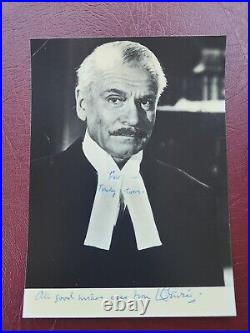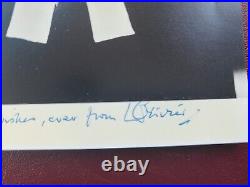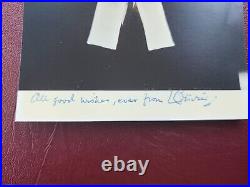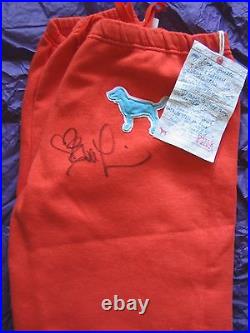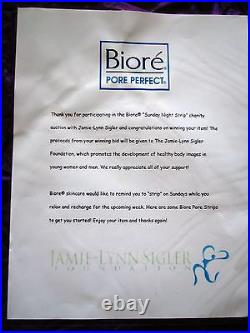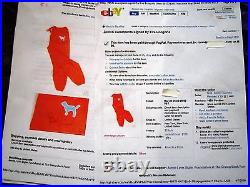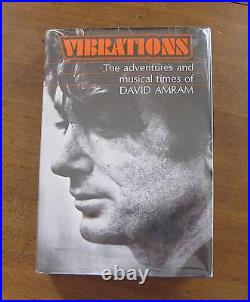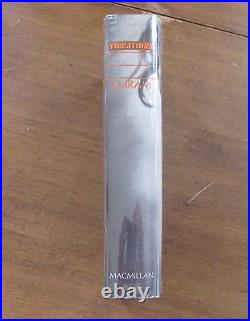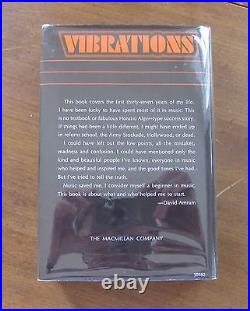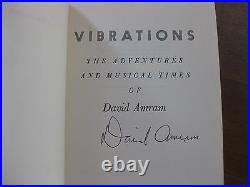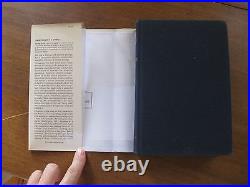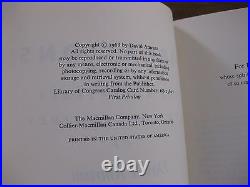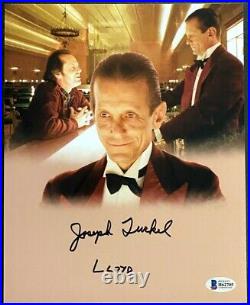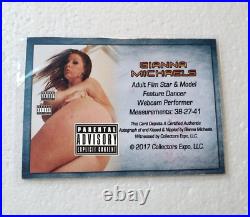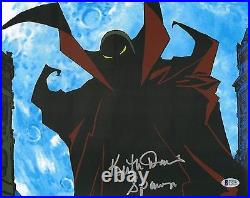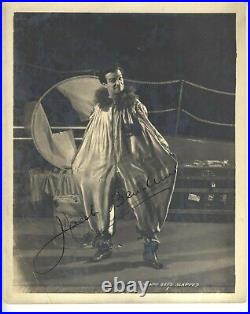


A VINTAGE ORIGINAL 8X10 INCH SIGNED GELATIN SILVER PRINT PHOTO BY JACOB BEN-AMI FROM’HE WHO GETS SLAPPED. Jacob Ben-Ami, a founder of the Jewish Art Theater who achieved critical acclaim on both the Yiddish and English-speaking stages, died yesterday at Lenox Hill Hospital after a short illness. He was 86 years old and lived alone at 50 West 97th Street. He Who Gets Slapped Russian:??? Is a play in four acts by Russian dramatist Leonid Andreyev; completed in August 1915 and first produced in that same year at the Moscow Art Theatre on October 27, 1915. Immensely popular with Russian audiences, the work received numerous stagings throughout the Russian speaking world in the two decades after its premiere, and then later enjoyed a resurgence of popularity in the 1970s and 1980s in Russian theaters. The work is still part of the dramatic repertory in Russian speaking countries. While well-liked by the public, critical reaction to the work was initially negative in Russia. It was later reevaluated as a masterwork of Russian drama, and is regarded as Andreyev’s finest achievement among his 25 plays. The play is representative of Andreyev’s “pansyche theatre” in which the plot focuses on developing the internal, psychological and intellectual aspects of characters over external action. Set inside a circus within a French city, the play’s main character is a mysterious 39-year-old stranger (referred to as “He”) whose name is never revealed to the audience. “He” is fleeing a failed marriage and joins the circus as a clown. “He” falls in love with the horseback rider Consuelo, the daughter of Count Mancini. The Count pushes Consuelo into marrying Baron Renyard for financial gain. “He” poisons Consuelo, Baron Renyard commits suicide in despair, and then “He” drinks the poison himself at the end. On the international stage, the play became Andreyev’s most successful in the United States, being popular with both audiences and critics when it was staged on Broadway at the Garrick Theatre in 1922 in a production mounted by the Theatre Guild. That production used an English language translation of the original Russian by the psychoanalyst Gregory Zilboorg which was first published in 1921. The play has been staged in multiple languages internationally, but is most often performed in English outside of Russia. A 1944 English translation made for The Old Vic by Judith Guthrie reduced the structure of the play to two acts instead of four. This version was used for the 1946 Broadway revival, the 1947 West End production, and several other stagings in the United States and United Kingdom during the 20th century. The success of the stage play in the US led to the development of Victor Sjöström’s critically successful 1924 silent film of the same name which was notably the first film ever made by Metro-Goldwyn-Mayer. Besides this film, the play has been adapted many times, including an earlier Russian film in 1916, a Swedish film in 1926, a novel in 1925, an opera in 1956, a 1961 television film, and a musical in 1971. Ben-Ami first appeared in an English-speaking production in 1920, when he played the leading role in “Samson and Delilah, ” a play by the Swede Sven Lange that he had originally starred in and directed in Yiddish at the Jewish Art Theater. Throughout a distinguished career he reflected that same sort of theatrical pluralism, appearing in plays by American, British, Russian and Yiddish playwrights during tours in Europe, South Africa, South America and the United States, performing with equal skill in Yiddish and in English. His reviews, in any language, were always good, although he appeared in only one real Broadway hit-Paddy Chayefsky’s “The Tenth Man, ” which opened in 1959 and in which he played the grandfather. He was last seen on the stage in 1972, in a production of “Yoshe Kalb, ” staged at the theater on 12th Street and Second Avenue-the site of the old Irving Place Theater-where Mr. Ben-Ami, then young Russian immigrant with idealistic views about the stage, first appeared in 1918 with Celia Adler, Ludwig Satz, and Maurice Schwartz. The productions of their company marked the full flowering of what Miss Adler called in her memoirs the Second Golden Era of American Yiddish Theater. The first great period of the Yiddish theater coincided with the great wave of Jewish immigration at the turn of the century. Ben-Ami was known as the literatatnik of that group, an actor who believed that the broad melodramas and comedies usually associated with the Yiddish stage should give way to more modern and realistic drama. When he was hired by Maurice Schwartz as principal player at the theater on the Lower East Side, Mr. Ben-Ami stipulated that a serious play would appear once a week, even agreeing to take a pay cut for the loss that Mr. Schwartz, a more pragmatic producer, expected. Although the first such production, “A Secluded Nook, ” was an unexpected success, the differences in philosophy and temperament between Mr. Ben-Ami ultimately led to a parting. Schwartz renamed his downtown tneater the Yiddish Art Theater, while Mr. Ben-Ami moved uptown to Madison Square and founded the Jewish Art Theater at Madison Avenue and 27th Street. It was there that he appeared in “Samson and Delilah, ” which was seen by the producer Arthur Hopkins, who later staged it at the Greenwich Village Theater, with an English-speaking cast that included Sam Jaffe and Edward G. Alexander Woolcott compared Mr. Ben-Ami to Eleanor Duse in his review of the production. Of the founding of his own theater Mr. Ben-Ami was to write decades later in The New York Times, About 20 years ago I knew the great joy of doing both what I wanted to and what I believed in doing in the theater. His theater in Madison Square successfully presented productions in Yiddish of plays or works by Sholom Aleichem, Tolstoy, and Gerhart Hauptmann. But, more important, it attempted to undercut the star system so prevalent in Yiddish Theater then and to highlight more modern productions. Starring roles were to be rotated, billing was to be alphabetical, and for the broad technique of the past, a more psychological approach was brought to bear on acting. The results led a New York Times reviewer to write of one of its plays in 1920, It is no longer the product of merely a Jewish theater. And the audiences said the same. As even theatergoers who did not speak Yiddish increasingly came to the Jewish Art Theater. Stalkerware’ Apps Are Proliferating. It’s Never Too Late to Publish a Debut Book and Score a Netflix Deal. For Al Franken, a Comeback Attempt Goes Through Comedy Clubs. Continue reading the main story. Ben-Ami was born in the Russian town of Minsk in 1890, the son of prosperous farmers; early in life he became enthralled by entertainment and acting, and in his later years always recalled his earliest ambition as the desire to be a circus clown. But that did not color his disdain of traditional Yiddish theater, which he found farcical and superficial. Ben-Ami began appearing in small repertory companies in Minsk. He was offered a recommendation to the renowned Moscow Art Theater, but working in the capital would have meant converting from Judaism, and the young actor refused. He appeared with various troupes as both an actor and a director until he decided to emigrate to New York in 1912. He worked here at the Neighborhood Playhouse and with variety of amateur groups before joining the group at Irving Place in 1918. After the success of his theater, and his appearance in the English-speaking Samson and Delilah,’ Mr. Ben-Ami was recognized as something of a dramatic find. He appeared on Broadway in 1921 in another Hopkins production, “The Idle Inn, ” followed by “Johannes Kreisler, ” “Man and the Masses” and “Welded, ” and went on in the 30’s to become mainstay of Eva LaGalliene’s Civic Repertory Theater, starring in “The Seagull, ” “The Cherry Orchard” and Camille. Ben-Ami starred in “Hamlet” and “Abe Lincoln in Illinois” in Yiddish in South America, played Willie Loman in a South African production of “Death of a Salesman, ” and appeared in an English-speaking version of “The World of Sholom Aleichem” in Chicago. He played for nine seasons in Buenos Aires, appeared at the Forum in Lincoln Center, and was in Isaac Bashevis Singer’s “In My Father’s Court” at the Folksbiene’Playhouse in 1971. From time to time Mr. Ben-Ami would attempt to revive a serious Yiddish troupe, but as he grew older he was satisfied with his many appearances in Yiddish productions mounted by others. Ben-Ami married Slava Estrin, an actress who translated plays from German, Russian and Polish into Yiddish. She died in 1966. The couple had one son, Amon, a textbook illustrator who lives in New York. Ben-Ami is also survived by a nephew, Paul Warren, and a niece, the actress Jennifer Warren. A funeral service will be held at 11 A. Tomorrow at Park West Chapel, 115 West 79th Street. [1][2] Immensely popular with Russian audiences, the work received numerous stagings throughout the Russian speaking world in the two decades after its premiere, and then later enjoyed a resurgence of popularity in the 1970s and 1980s in Russian theaters. [2] The work is still part of the dramatic repertory in Russian speaking countries. [2] While well-liked by the public, critical reaction to the work was initially negative in Russia. [1] Set inside a circus within a French city, the play’s main character is a mysterious 39-year-old stranger (referred to as “He”) whose name is never revealed to the audience. [1] “He” is fleeing a failed marriage and joins the circus as a clown. [1][3] That production used an English language translation of the original Russian by the psychoanalyst Gregory Zilboorg which was first published in 1921. [4] The play has been staged in multiple languages internationally, but is most often performed in English outside of Russia. [1] A 1944 English translation made for The Old Vic by Judith Guthrie reduced the structure of the play to two acts instead of four. [5] This version was used for the 1946 Broadway revival, the 1947 West End production, and several other stagings in the United States and United Kingdom during the 20th century. Composition and performance history in Russian. International performances in other languages. Photograph of Margalo Gillmore (Consuelo) and Louis Calvert (Baron Regnard) in the 1922 Broadway production. Roles, Original Broadway cast. Original Broadway cast, [3]. January 9, 1922 – May 20, 1922. “He”, mysterious stranger (sometimes modified to “Funny”). “Gentleman”, mysterious stranger and acquaintance of “He”. Consuelo, a horseback rider. Baron Renyard, wealthy patron. Count Mancini, Consuelo’s father. Papa Briquet, owner of the circus. Zinida, a lion tamer. Alfred Bezano, jockey and Consuelo’s lover. Richard Bennett as “He” (left) & Louis Calvert as Baron Regnart (right) in the 1922 Broadway production. The action takes place within circus in a large city in France. [1] In the opening scene a mysterious man, “He”, approaches the circus performers and requests to join the toupe as a clown. Uncertain, the circus members recognize that the man is well educated and cultured by his speech and manner, but believe he may be an alcoholic. To win their approval, “He” suggests that his part in the circus act could be receiving slaps from the other clowns, and that his circus name could be “He Who Gets Slapped”. [1] Andreyev’s script, keeps the audience guessing over the identity of “He”, and information is divulged in piecemeal over the course of the play’s four acts. [1] This construct keeps the psychological aspects of the play at the center, as the audience is constantly trying to figure out what is motivating the central character. In the first act, Papa Briquet, the owner of the circus, asks to see “He”‘s identification in order to register his employment with the government. “He” discloses his name into Papa Briquet’s ear, without revealing it to the audience. [1] The reaction of the circus owner reveals that “He” is famous and respected, but the audience gains no further knowledge of the character other than he is 39 years old. In the second act, “He” is an established clown in Briquet’s circus and his act has been a huge success, bringing financial prosperity to the circus troupe. However, the other performers warn “He” against talking too much about controversial political and religious topics during his act. At the end of this act a second mysterious man, known only as the “Gentleman”, arrives. It is revealed that the “Gentleman”, a former close friend of “He”, is the cause of “He”‘s marital problems, as the “Gentleman” had an affair with “He”‘s wife and they now have a son. [1] The Gentleman in hopes of repairing their relationship has been searching all over Europe for “He” for months, as his friend disappeared mysteriously after leaving an angry letter. In the third act, it is revealed that the “Gentleman” is now married to “He”‘s former wife, and that he wrote a highly successful book about his affair with her that has made the “Gentleman” rich and famous. The Gentleman appears regularly in the press with his wife and son. “He” vows never to return to his former life, and the Gentleman leaves. [1] “He” focuses his attention on Consuelo, and makes an unsuccessful attempt to sabotage her engagement to Baron Regnard. In the fourth act, “He” poisons Consuelo in order to prevent her from marrying Baron Regnard and she dies. Mancini commits suicide in despair. Consumed by guilt, “He” takes the poison as well and dies. Photograph of Margalo Gillmore, Frank Reicher and Richard Bennett in the 1922 Broadway production of He Who Gets Slapped. In a letter to S. Goloushev of September 10, 1915. Leonid Andreev writes: “Since August 17-18, among the pains and other things, I sat down to work, ” and names among other works completed during this time “He Who Gets Slaps” – a large 4-act play for the Drama Theater. It will be great to play and watch! [2] The initial staging of the play at the Moscow Drama Theater was very important to Andreev: in the fall of 1915 he specially came to Moscow to be present at the rehearsals, and even earlier he wrote a number of letters to some actors of this theater, in which he gave detailed explanations of the play. [2] He pays particular attention in his comments to the character of Consuelo. In a letter to the actress E. Polevitskaya September 28, 1915, he stressed that the disclosure of his one of the most important tasks of the artist and director: to show the goddess under the tinsel jockey and acrobat. The work premiered at the Moscow Art Theatre on October 27, 1915 to tepid critical reviews, but tremendous popularity with audiences who applauded continuously through fourteen curtain calls. [2][1] The production marked the professional debut of lauded Russian actress Faina Ranevskaya who portrayed one of the smaller roles. [2] The Alexandrinsky Theatre staged the work the following month (premiere November 27, 1915) in a staging by Nikolai Vasilyevich Petrov. [2] Numerous productions of the work were presented in Russia and Estonia over the next two decades, including performances in Kiev, Syzran, Voronezh, and Tallinn among others. The play received a resurgence of popularity in the Russian speaking world in the 1970s and 1980s, with productions mounted at the Russian Theatre, Tallinn, Saint Petersburg Lensoviet Theatre, and the Russian Army Theatre among others. [2] In 2002, visiting Finnish director Raija-Sinikka Rantala staged the play at the Moscow Art Theater. The title role was played by Viktor Gvozditsky, to whose 50th anniversary the premiere of the play was timed. [2] In 2020, Moscow director Natalia Lyudskova staged the play at the Pushkin State Drama Theatre Kursk. Swedish actor Gösta Ekman as “He” in 1926. In 1919 the play was given its first staging in France at the Théâtre des Arts in Paris. The production was directed by Georges Pitoëff who also wrote the French language translation of the play. His wife, Ludmilla Pitoëff, portrayed Consuelo in the production. [6] That same year the play had its United States debut in the Yiddish language with Jacob Ben-Ami as “He” at The New Yiddish Theater (in Yiddish, Dos Naye Yidisher) in New York City. [7][8] Ben-Ami would go on to perform the role in Yiddish and English in multiple production in the United States and Canada into the 1930s, including a 1929 production at the Cleveland Play House which became entangled in a highly publicized labor dispute. In March 1921 an American magazine, The Dial, published an English-language translation of the play by the psychoanalyst Gregory Zilboorg after his translation drew the attention of the magazine’s editor, the poet Marianne Moore. [10] Well received, that translation has been republished 17 times since that initial publication. [10] That translation was used for what was billed as the United States premiere (but really the English language premiere) of the play on January 9, 1922 at Broadway’s Garrick Theatre. [11] It remained there until February 13, 1922, when it transferred to the Fulton Theatre for performances through May 20, 1922. [3] The production then moved back to the Garrick Theatre, where it continued to play through September 30, 1922, closing after a total of 308 performances. [12] Starring Richard Bennett, the production earned glowing reviews in The New York Times. Following the Broadway production, producer Sam H. Harris mounted a national tour of the production which was directed by Joseph Gaites and was headlined once again by Richard Bennett. [13] Among the tour’s stops were the Hollis Street Theatre in Boston in November 1922;[13] a 10 week run at the Playhouse Theatre (now Fine Arts Building) in Chicago in December 1922 through February 1923;[13] and the Auditorium Theatre in Baltimore in October 1923. [14] Several more stagings of the play in English followed, including a productions at the Le Petit Theatre du Vieux Carre in New Orleans (1924). [10] The work was regularly staged in American regional theaters during the 1920s and 1930s when Andreev was at his height of popularity in the United States; during which time his works were banned in the Soviet Union. In 1926 the Austrian premiere was given at the Modernes Theater Wien in Vienna in 1926. [15] That same year the play was mounted for the first time in the United Kingdom at the Birmingham Repertory Theatre with Stanley Lathbury as “He”, Ralph Richardson as “Gentleman”, Muriel Hewitt as Consuella, Alan Howland as Polly, and Edward Chapman as Tilly using an English language translation by Gertrude Schurhoff and Sir Barry V. Jackson; the latter of whom directed the production. [16] In 1927 the play was mounted in London for the first time at the Everyman Theatre in Hampstead with Milton Rosmer as “He”, Frederick Lloyd as “Gentleman”, Gabrielle Casartelli as Consuelo, Dorie Sawyer as Zinida, Godfrey Baxter as Alfred Bezano, and Brember Wills as Mancini. In 1929 it was staged at the Oxford Playhouse for the first time. [17] In 1952 that theater mounted the work again in a celebrated revival directed by Oliver Marlow Wilkinson with David March as “He”, Susan Dowdall as Consuelo, John McKelvey as Briquet, Hugh Manning as Count Mancini, Mary Savidge as Zinida, and Ronnie Barker as Polly. In 1944 the played was staged at the Liverpool Playhouse by The Old Vic whose players had relocated to Liverpool from London during World War II due to The Blitz. Directed and produced by Tyrone Guthrie, it used a new English language translation divided into two Acts instead of four by Guthrie’s wife, Judith Guthrie, and was performed under the title “Uneasy Laughter”. The character of “He”, played by Old Vic’s director Peter Glenville, was renamed Funny in this version. Other cast member included Audrey Fildes as Consuelo, Eileen Herlie as Zinida, Arnold Marlé as Briquet, Noel Willman as Count Mancini, Scott Forbes as Bezano, Percy Heming as Jackson, and Henry Edwards as Baron Reynard. Both Guthries were utilized again for a Broadway revival staged by The Theatre Guild in 1946. The production starred John Abbott as Count Mancini, John Wengraf as Baron Reynard, Susan Douglas Rubes as Consuelo, Stella Adler as Zinaida, Wolfe Barzell as Papa Briquet, Reinhold Schünzel as Baron Regnard, Russell Collins as Jim Jackson, and John M. O’Connor as Polly. [21] Douglas won a Donaldson Award for her portrayal. In 1947 the play was staged for the first time in London’s West End at the Duchess Theatre under the artistic direction of Robert Helpmann and Michael Benthall; once again using Guthrie’s two act version of the play. Helpmann portrayed Funny (“He”), with Audrey Fildes as Consuelo, Margaret Diamond as Zinida, Arnold Marlé as Briquet, Ernest Milton as Count Mancini, Leonard White as Bezano, Stanley Ratcliffe as Jackson, Alfie Bass as Tilly, Peter Varley as Polly, and Basil Coleman as “Gentleman”. In 1951 the play was mounted using Guthrie’s adaptation at the Watergate Theatre, London with Brian Cobby as Bezano. [24] In 1952 literary critic Peter Bayley directed a production of the play for University College Players starring a young Maggie Smith as Consuelo. [25] In 1958 a second national tour starring Alfred Drake as “He” toured the United States. [26] In 1964 the Hampstead Theatre staged the work with Vladek Sheybal as “He”, Tristram Jellinek as Mancini, and Jo Maxwell Muller as Consuelo. [27] In 1985 the play was staged at the Riverside Studios. In 1995 the Hudson Theater won an Ovation Award for their production of the play which was directed by Dan Shor and starred Bud Cort as “He”. [29] A critically acclaimed production directed by and starring Yuri Belov with a new English translation by Belov was staged at the Ivy Substation in Culver City, California in 1997. Margalo Gillmore (centre, seated) as Consuelo, Helen Westley (Zinida), Philip Leigh and Edgar Stehli (Tilly and Polly, musical clowns) in the 1922 Broadway production. The first two productions, both Moscow and Petrograd, were, according to theater chronicles and recollections of contemporaries, a great success with the audience. [2] The actor llarion Nikolaevich Pevtsov in the leading role of “He” in both productions was praised universally by critics and audiences. [2] However, criticism was mostly negative about the play at the time of its premiere with the playwright being accused of “hodgepodge” and “derivation”. [2] Russian critic Alexander Kugel, who usually championed Andreev’s plays, gave a cold review of the play, reproaching the author’s lack of clear thought, which is replaced here by many contradictory “ideas”, and the abuse of external stage effects. Goloushev was more complimentary of the play and speaks of “He” as a role that requires a tragic actor of Chaliapin’s scale for its performance. In his article he points to the essential conflict underlying this drama-a masquerade where everyone’s mask is fused to his skin… “He” is again a Man with a capital letter, and again next to him is a gentleman, a man of little h. Again a clash of personality and crowd, of greatness of spirit and vulgarity. The personality is defeated. Everything he had lived with has been taken from him. The Russian poet Fyodor Sologub was one of the work’s champions. In his analysis the main character “He” is revealing of the clear outlines of an ancient myth under the guise of reality we are experiencing. Thoth, is an envoy of another, higher world, the Creator of ideas, who descended to the circus arena, again took on his humiliated appearance, a rabbit’s eyesight, voclauned, to again accept the sourdough. Consuella is the daughter of the people, the soul of simple-minded humanity, the charming Psyche… And the eternal story of the innocent soul, seduced by the eternal Defiler, is repeated. Current assessment of He Who Gets Slapped among Russian writers is much more positive, with scholars on Andreev contending that initial criticism misinterpreted the nature of conventionality in Andreev’s writing. [2] Contemporary playwright Victoria Nikiforova notes: Leonid Andreev’s play should appeal to lovers of indie melodramas and Emmerich Kálmán’s operettas. He Who Gets Slapped anticipated the plot of Die Zirkusprinzessin ten years earlier and the heated atmosphere of Seeta Aur Geeta by fifty. Critical assessment in the US was positive from its initial presentation in English in 1922. [1] Russian studies academic Frederick H. White writes, Andreev’s play about betrayal and revenge, seemingly, struck a chord with modern industrial America, during the unscrupulous Gilded Age of robber barons and a period of great social change due to a rapidly increasing immigrant population, a period in American history when the circus crisscrossed the country providing a vivid cultural window into this era’s complex and volatile web of historical changes. File:He Who Gets Slapped (1924). He Who Gets Slapped (full film). 1915, Russian film He Who Gets Slapped is released. 1924, American film He Who Gets Slapped is released by MGM. Carlin’s novel He Who Gets Slapped is published. 1926, Swedish film He Who Gets Slapped is released. 1956, Robert Ward and Bernard Stambler’s opera He Who Gets Slapped premieres at Lincoln Center. 1961, a television film for The Play of the Week starring Richard Basehart and Julie Harris[34]. 1971, an Off-Broadway musical adaptation entitled Nevertheless, They Laugh by composer Richard Lescsak and writer LaRue Watts is mounted at the Lamb’s Theatre in New York city with stars David Holliday and Bernadette Peters. Acob Ben-Ami was born on 23 December 1890 in Minsk, Belarus. His father was a house painter. He studied in a cheder and completed his education in a private school. After that he became an extra in a theatre. From his very early age he had a strong interest in the theatre. As a small boy he sang with various cantors and often, together with other choir boys, would be taken to sing behind the curtains in Russian theatre. When he was seventeen years old he was given walk-on roles with the Russian State Theatre (directed by Chernov and later by Belyiev). The following season he became the leader of the walk-on actors and still later he was given larger roles, some with talking parts. In the summer of 1908, he traveled with the Sam Adler-Meerson troupe as an understudy. After five months Ben-Ami was given the opportunity to play some minor roles. However, Adler had to let him go, telling him that he would never be an actor. Ben-Ami joined Mitleman’s troupe where he was given larger roles. After that, when both troupes amalgamated, Ben-Ami performed with them for a year. In Odessa, he met Peretz Hirshbein and helped him found the first Yiddish Dramatic Theatre (See Hirshbein troupe). There he both acted and directed. When this troupe disbanded, Ben-Ami directed for a short while in Vilna for the Yiddish Dramatic Amateur Circle. Later, this group became the nucleus for the Vilna Troupe. In 1912 Ben-Ami was invited to London to be the director and leading actor in the dramatic presentations of Feinman’s Artistic Temple Feinman’s Yiddish People’s Theatre – ed. After four months, however, the theatre was closed down. Ben-Ami was then invited to America to join Sarah Adler’s troupe, where Schildkraut was performing at the time. There Ben-Ami performed in “The Green Maiden, ” but this theatre too closed down in the middle of the season. Ben-Ami then became a member of the actor’s union, and in 1913 he was contracted to Thomashefsky where he acted in Dymow’s “Eternal Wanderer” under the direction of the author. In 1914 Ben-Ami toured with Keni Lipzin. In the spring of that year, he appeared at the Neighborhood Playhouse, with a group of amateurs in three one-act plays by I. In 1915, Ben-Ami signed on once more with Thomashefsky who assigned him very few roles over the next two years. He then joined Lieberman’s theatre where he played in a melodramatic repertoire directed by Weintraub. There he created the character “Note vasertreger” in Kalmanowitz’s A Mother’s Worth. In 1917 Ben-Ami signed on with Schwartz’s Irving Place Theatre, where they presented Pinski’s “Love’s Strange Ways” and Hirshbein’s “Faraway Corner, ” which became the hallmark of this theatre. The theatre had two names: In Yiddish, “The New Yiddish Theatre” (Dos naye yidisher teater), and in English, “The Jewish Art Theatre” (this name was bestowed on it by Emanuel Reicher). The repertoire of this theatre was: Hirshbein’s, “Puste kretchme” (Empty Shops), “Grine felder” (Green Fields); various one-act plays by Sholem Asch; “Mit’n shtrom” (With the Stream) by Sholem Aleichem; “Mentshn” (People), also, Pinski’s “Shtumer moshiakh” (The Silent Messiah), Dymow’s “Bronx Express, ” Hauptmann’s “Eynzame mentshn” (Lonely People), Tolstoy’s “Macht fun finsternish” (The Power of Darkness), and a reworked version of Sven Lang’s Samson and Delilah. Later he performed with the British Theatre Guild as an actor and director. Gorin: Happenings in the Yiddish Theatre, Vol. Entin: A yunge aktyor in a groyse role (a young actor in a great role), Di varhayt, October 6, 1917. Waiter’s Shtumer (The Silent Ones) in nayem yidishn teater (New Yiddish Theatre). Di naye velt, New York, April 16, 1920. Koralnik: Shildkroyt and Ben-Ami, in Der tog, November 21, 1920. Loel Slonim – Ben-Ami derzeylt vi er hot gefilt bay zany ershtn oyftrit oyf der englisher bine (Ben-Ami tells how he felt when he first appeared on the English language stage). Mukdoni – “Teater” (Theatre), New York 1927, pp. Jacob Mestel – “Zeks koyln tzaychnungen (Six charcoal drawings)”, Yiddish Theatre, Warsaw 1927. Kumner -Zichroynes vegn der hirshbayn troupe (Memories of the Hirshbein troupe), teater zichroynes (theatre memories), edited by Z. Zilbertzveig, Vilna, 1928, pp. Shames – Yaakov Ben-Ami vegn yidishn teater in amerike (About Yiddish Theatre in America), “Lit-bal”, Vol. Abba Lillian – “Samson and Delilah” “Yidishe vilne”, Philadelphia, June 5, 1924. Parker- Jacob Ben-Ami and Berta Gertman “Dos yidisher vort” (The Yiddish Word), Winnipeg, May 28, 1926. Koralnik – David Warfield–Ben-Ami, “Der tog” N. Buchwald – Ben Ami’s Triumph in Samson and Delilah, Frayhayt, October 8, 1926. Malach – Yaakov Ben-Ami un zayn yidishe kunst teater (Jacob Ben-Ami and his Yiddish Art Theatre), Di prese, Vol. Buchwald – Vos Ben-Ami and the players created in Leivik’s “Shop”, Frayhayt, Vol. Glantz – “Shop”, Der tog, Dec. Cahan – A naye piese in irving pleys teater (A New Play in the Irving Place Theatre) “Shop”, Forward, Dec. Buchwald – Leyvik’s sotziale drama in an umgeveyntlicher oyffirung (Leyvik’s social-drama in an unusual presentation), Frayhayt, Dec. Frumkin – Samson and Delilah in Irving Place Theatre, Der tog. Mukdoni – “Di shif mit tzadikim” (The Boat of the Righteous), Tog zhurnal, N. Cahan – Yevrayenov’s New Play in the Irving Place Theatre, Forward, September 21, 1926. Frumkin – “Di shif mit tzadikim” A beautiful, interesting theatrical play, Der tog, September 24, 1926. Pompadour – Drama-ayn, drama-oys (drama in and drama out) “kunst” (art), N. Mukdoni — Samson and Delilah, October 23, 1926. Volyhiner- Eyndruckn fur yidishn teater-fortshrit Impressions of the Yiddish Theatre. Cahan – Berkovitch’s new drama in the Irving Place Theatre, Forward, Nov. Shachne Epstein – A Literary Melodrama with an allusion to something more, Frayhayt, Nov. Pompadour – “Fun yener velt”, Kunst, Nov. Mukdoni – “Fun yener velt”, Yidishe teater, Nov. Kesner – “Fun yener velt”, Yidishe teater, Nov. Glantz – “Fun yener velt”, Der tog, Nov. Funeral services were held here yesterday for Jacob Ben-Ami, one of the best known actors of the Yiddish stage. He died Friday at the age of 86. Ben-Ami, who performed with equal skill in both English and Yiddish, had a long distinguished career appearing in plays by Yiddish, American, British and Russian playwrights on tours in Europe, South Africa, South America and the United States. He was last seen on the stage in 1972 in a production of “Yoshe Kalb” staged at the theater on Second Avenue and 12th Street on the East Side where he had appeared with Maurice Schwartz in 1918 in what was then the Irving Place Theater. Born in Minsk, Ben-Ami fell in love with the theater early. But he found the Yiddish theater too superficial and wanted to change it by learning from the Russian theater. He appeared in small repertory companies in Minsk but rejected a chance to join the renowned Moscow Art Theater because it would have meant converting from Judaism. Ben-Ami immigrated to the U. In 1921 and worked with some amateur groups before joining Schwartz in 1918. Ben-Ami, who wanted more modern and realistic dramas than the melodramas and comedies popular with Yiddish audiences, broke with Schwartz and founded the Jewish Art Theater where for years he presented plays by such authors as Sholom Aleichem, Tolstoy and Gerhart Hauptmann. He appeared in several Broadway productions but in only one real hit, Paddy Chayefsky’s “The Tenth Man, ” which opened in 1959 and in which he played the grandfather. Ben-Ami’s long stage career began in his native Minsk, Belorussia, before he was a teenager. After traveling with many Yiddish acting companies through Eastern Europe, Ben-Ami went to the United States in 1912 to appear with Rudolf Schildkraut and Sarah Adler in Yiddish plays. In 1918, together with Maurice Schwartz, he founded the Yiddish Art Theater in New York. Ben-Ami’s reputation as an actor and director grew, and in 1920 he made his English-language acting debut in Samson and Delilah, a drama written by a Dane, Sven Lange, that Ben-Ami had played and directed in Yiddish in New York and in Russia. The following year he made his Broadway debut in Peretz Hirshbein’s The Idle Inn, and many leading roles followed. Ben-Ami played more parts on the English-speaking stage than on the Yiddish, but he did not appear in a commercial success until almost 40 years later, when he played a grandfather in Paddy Chayefsky’s The Tenth Man (1959). In the interim, Ben-Ami toured extensively in South America, in South Africa, and in the United States where he did Yiddish plays and Yiddish translations of Russian, European, and American plays. This item is in the category “Collectibles\Autographs\Celebrities”. The seller is “memorabilia111″ and is located in this country: US. This item can be shipped to United States, New Zealand, Fiji, Papua New Guinea, Wallis and Futuna, Gambia, Malaysia, Taiwan, Poland, Oman, Suriname, United Arab Emirates, Kenya, Argentina, Guinea-Bissau, Armenia, Uzbekistan, Bhutan, Senegal, Togo, Ireland, Qatar, Burundi, Netherlands, Slovakia, Slovenia, Equatorial Guinea, Thailand, Aruba, Sweden, Iceland, Macedonia, Belgium, Israel, Liechtenstein, Kuwait, Benin, Algeria, Antigua and Barbuda, Swaziland, Italy, Tanzania, Pakistan, Burkina Faso, Panama, Singapore, Kyrgyzstan, Switzerland, Djibouti, Chile, China, Mali, Botswana, Republic of Croatia, Cambodia, Indonesia, Portugal, Tajikistan, Vietnam, Malta, Cayman Islands, Paraguay, Saint Helena, Cyprus, Seychelles, Rwanda, Bangladesh, Australia, Austria, Sri Lanka, Gabon Republic, Zimbabwe, Bulgaria, Czech Republic, Norway, Côte d’Ivoire (Ivory Coast), Kiribati, Turkmenistan, Grenada, Greece, Haiti, Greenland, Yemen, Afghanistan, Montenegro, Mongolia, Nepal, Bahamas, Bahrain, United Kingdom, Bosnia and Herzegovina, Hungary, Angola, Western Samoa, France, Mozambique, Namibia, Peru, Denmark, Guatemala, Solomon Islands, Vatican City State, Sierra Leone, Nauru, Anguilla, El Salvador, Dominican Republic, Cameroon, Guyana, Azerbaijan Republic, Macau, Georgia, Tonga, San Marino, Eritrea, Saint Kitts-Nevis, Morocco, Saint Vincent and the Grenadines, Mauritania, Belize, Philippines, Democratic Republic of the Congo, Republic of the Congo, Colombia, Spain, Estonia, Bermuda, Montserrat, Zambia, South Korea, Vanuatu, Ecuador, Albania, Ethiopia, Monaco, Niger, Laos, Ghana, Cape Verde Islands, Moldova, Madagascar, Saint Pierre and Miquelon, Lebanon, Liberia, Bolivia, Maldives, Gibraltar, Hong Kong, Central African Republic, Lesotho, Nigeria, Mauritius, Saint Lucia, Jordan, Guinea, Canada, Turks and Caicos Islands, Chad, Andorra, Romania, Costa Rica, India, Mexico, Serbia, Kazakhstan, Saudi Arabia, Japan, Lithuania, Trinidad and Tobago, Malawi, Nicaragua, Finland, Tunisia, Uganda, Luxembourg, Brazil, Turkey, Germany, Egypt, Latvia, Jamaica, South Africa, Brunei Darussalam, Honduras.
- Industry: Celebrities
- Signed: Yes

